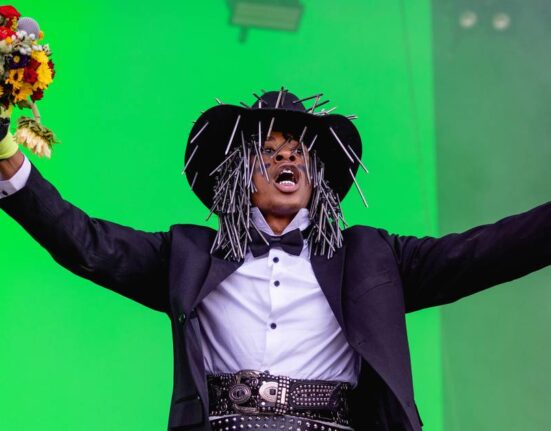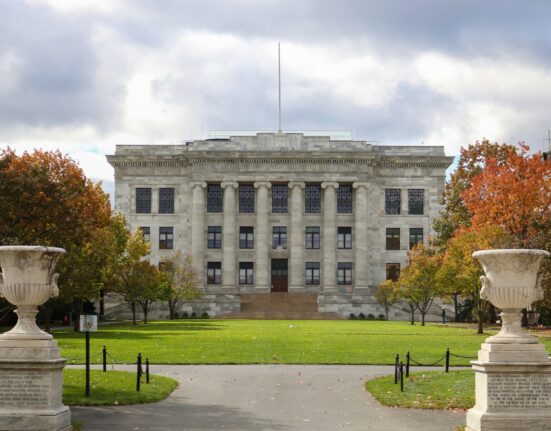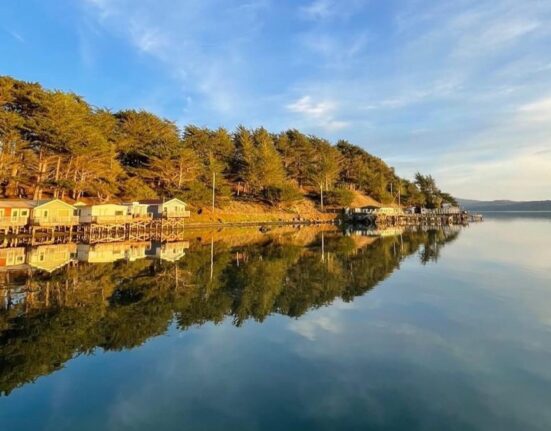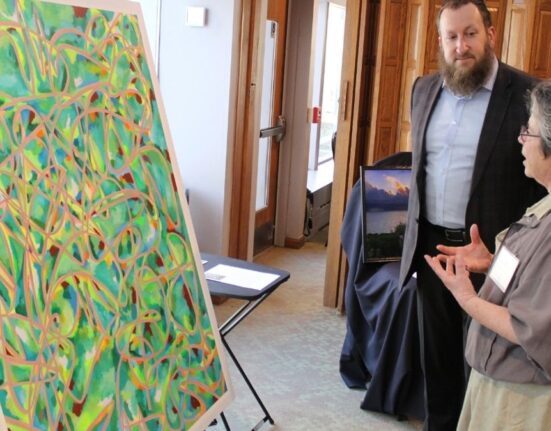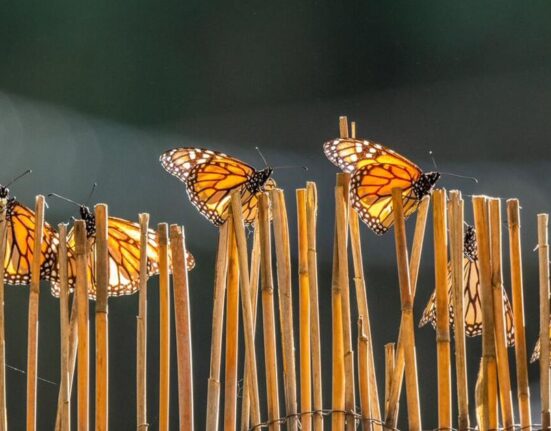Contemporary art by Indigenous artists is receiving a lot more attention these days with growing representation within collections and on exhibition schedules. The art market is a flawed indicator of success for living artists, but numerous news outlets have reported rising valuations and sales of work by Indigenous artists as an indication of a surge of interest from private collectors and museums.
This long overdue recognition is the result of on-the-ground efforts — over decades — by hardworking artists who have created work and curators who have mounted exhibitions that highlight important Indigenous perspectives. The three Seattle exhibitions below vary widely in media, tone and content, but are linked through the artists’ commitment to represent lived experiences, difficult histories and ongoing cultural inequities.
“Jaune Quick-to-See Smith: Memory Map”
New Mexico-based Jaune Quick-to-See Smith (citizen of the Confederated Salish and Kootenai Nation) has been a force in the art world for over five decades, creating deeply impactful work and opening doors for the increasing recognition of contemporary art by Native Americans. As an artist and curator, she has organized over 30 exhibitions of art by Indigenous people in addition to producing highly memorable mixed media art that blends abstraction with the critical use of iconic symbols such as canoes, buffalo, maps and American flags.
Currently showing at the Seattle Art Museum, “Memory Map” is the biggest and most comprehensive retrospective of her work to date.
Included in the show is Smith’s well-known, large-scale work from 1992 titled “Trade (Gifts for Trading Land with White People),” which uses biting humor and modernist strategies including collage, painterly abstraction and the use of found material such as articles cut from a tribal newspaper, stereotyping illustrations from ads and comics, and culturally appropriated or misleading Native-themed toys and sports memorabilia. At over 14 feet across, the immersive triptych offers complex layers and readings to reveal a history fraught with inequity.
In total, the exhibition includes over 130 paintings, drawings, sculptures, and examples of Quick-to-See Smith’s ongoing activism and generous curatorial practices. Organized by the Whitney Museum of American Art (New York), this traveling exhibition has received rave reviews since it opened in 2023 and is a must-see during its final stop — and only West Coast visit — in Seattle through May 12.
“Jaune Quick-to-See Smith: Memory Map,” through May 12; Seattle Art Museum, 1300 First Ave.; $19.99-$32.99, free for SAM members and children 14 and under; 206-654-3100, seattleartmuseum.org
“Sky Hopinka: Subterranean Ceremonies”
Like Quick-to-See Smith, Sky Hopinka (Ho-Chunk Nation/Pechanga Band of Luiseño Indians) is an artist, curator and believer in artistic collectives and collaborations. Hopinka’s chosen media are mainly film and photography, and frequently, language itself.
“Subterranean Ceremonies,” currently on view at the Frye Art Museum, is the artist’s first solo museum exhibition in the Northwest and features mesmerizing films and photographs that use audio recordings and etched phrases from English and Indigenous dialects.
Hopinka, who grew up in Washington state and now lives in New York, traveled the western powwow circuit with his family, an experience that underscored their displacement from their tribal homelands in Wisconsin and Southern California while connecting them with diverse Native cultures.
“Kicking the Clouds,” a 15-minute film from 2021, uses 50-year-old audiotapes of the artist’s grandmother learning the Pechanga language from her mother, who had been taught by a boarding school in Southern California to be ashamed of the language. Layered in is an interview of the artist’s mother in which she reflects on their family’s experiences.
Itinerancy, life on the road, and establishing a home and community are important themes in Hopinka’s art. At the same time, the artist resists autobiographical or documentary strategies that ask Indigenous filmmakers to simplify individual and complex histories or educate non-Native viewers. Instead, Hopinka uses montage, intergenerational exchange, and archival material mixed with new narration to “preserve opacity,” as he said in a 2023 interview. According to the MacArthur Foundation, which awarded him the prestigious MacArthur Genius award in 2022, Hopinka offers “new strategies of representation for the expression of Indigenous worldviews.”
“Sky Hopinka: Subterranean Ceremonies,” through May 26; Frye Art Museum, 704 Terry Ave.; free; 206-622-9250, fryemuseum.org
“Martine Gutierrez: Monsen Photography Lecture”
Brooklyn-based Martine Gutierrez is a first-generation American of Guatemalan and Mayan ancestry who creates photographs, video, music, performance art and other forms that explore social constructs and lived experiences of gender, Indigeneity, sexuality and fluid identities.
This presentation at the Henry Art Gallery will spotlight three prints and four large-scale photographs, including images from the acclaimed “Indigenous Woman” project from 2018 for which Gutierrez created a 124-page glossy magazine with vivid fashion spreads and made-up ads in which she presented herself in various guises and identities, including Mesoamerican Indigenous deities. As she wrote in an artist statement, the work “marries the traditional to the contemporary, the native to the post-colonial, and the marginalized to the mainstream in the pursuit of genuine selfhood, revealing cultural inequities along the way.”
In the “Body En Thrall” series, Gutierrez continues a concept that was begun in “Indigenous Woman,” in which Gutierrez inhabited variously gendered characters surrounded by male and female mannequins. In these beautifully dramatic black-and-white photographs, Gutierrez — who is transgender — explores constructed and enacted identities in suggested narratives fraught with sexual tension, longing and, perhaps, danger. And, yes, she does all of that by acting with mannequins.
“Martine Gutierrez: Monsen Photography Lecture,” March 30-July 28; Henry Art Gallery, University of Washington, 15th Ave. N.E. and N.E. 41st St., Seattle; $0-$20 suggested donation; 206-543-2280, henryart.org


